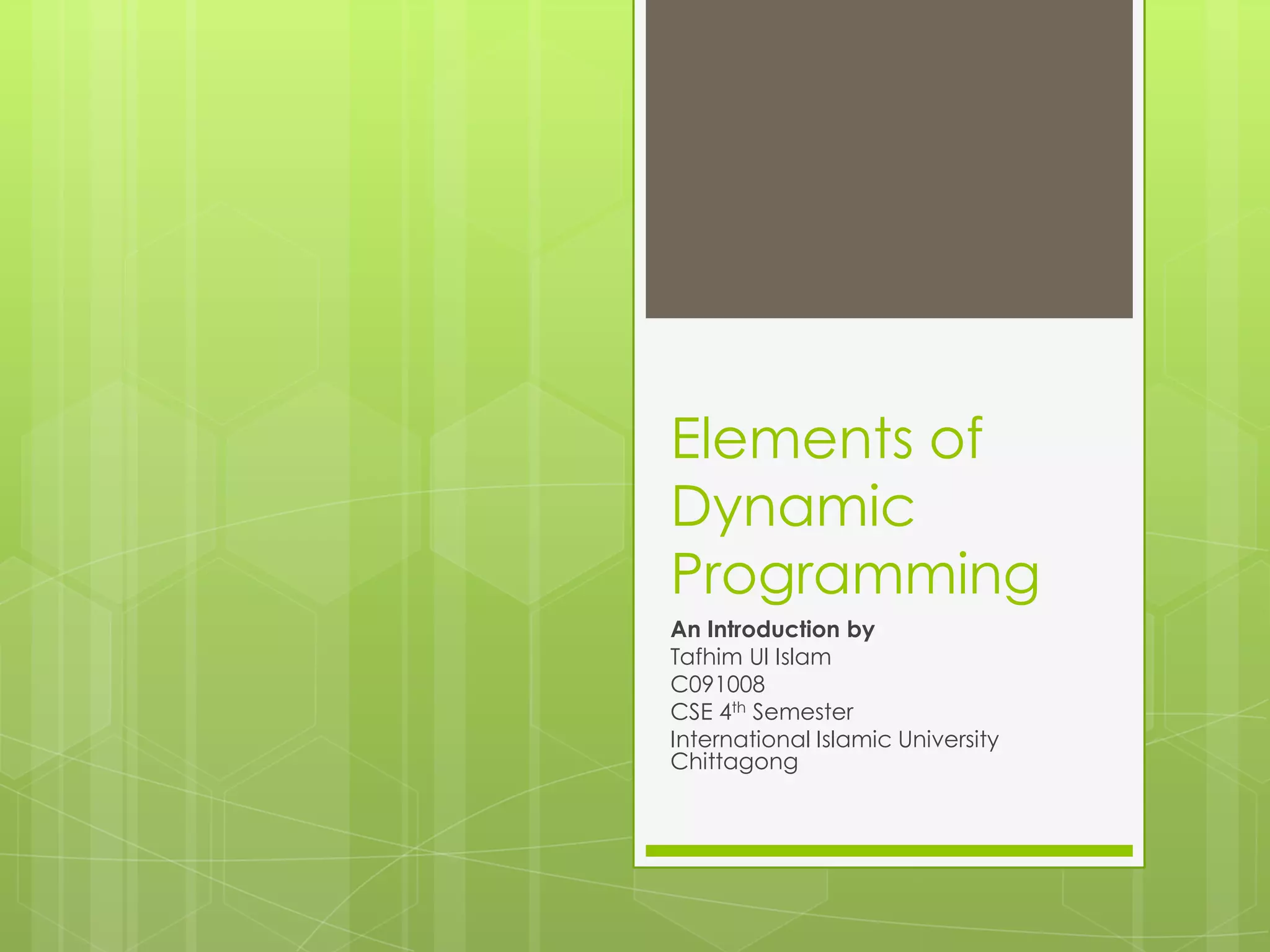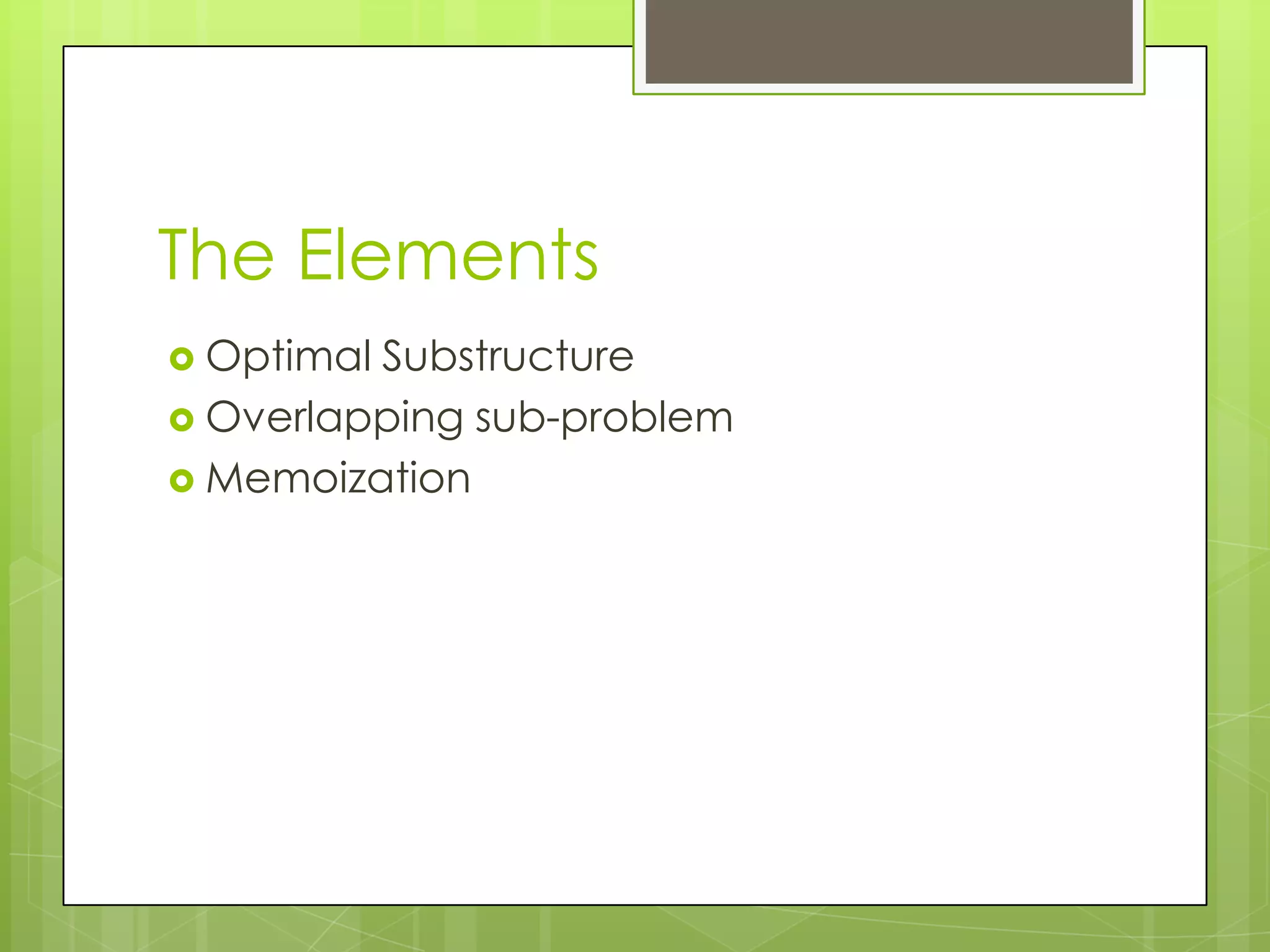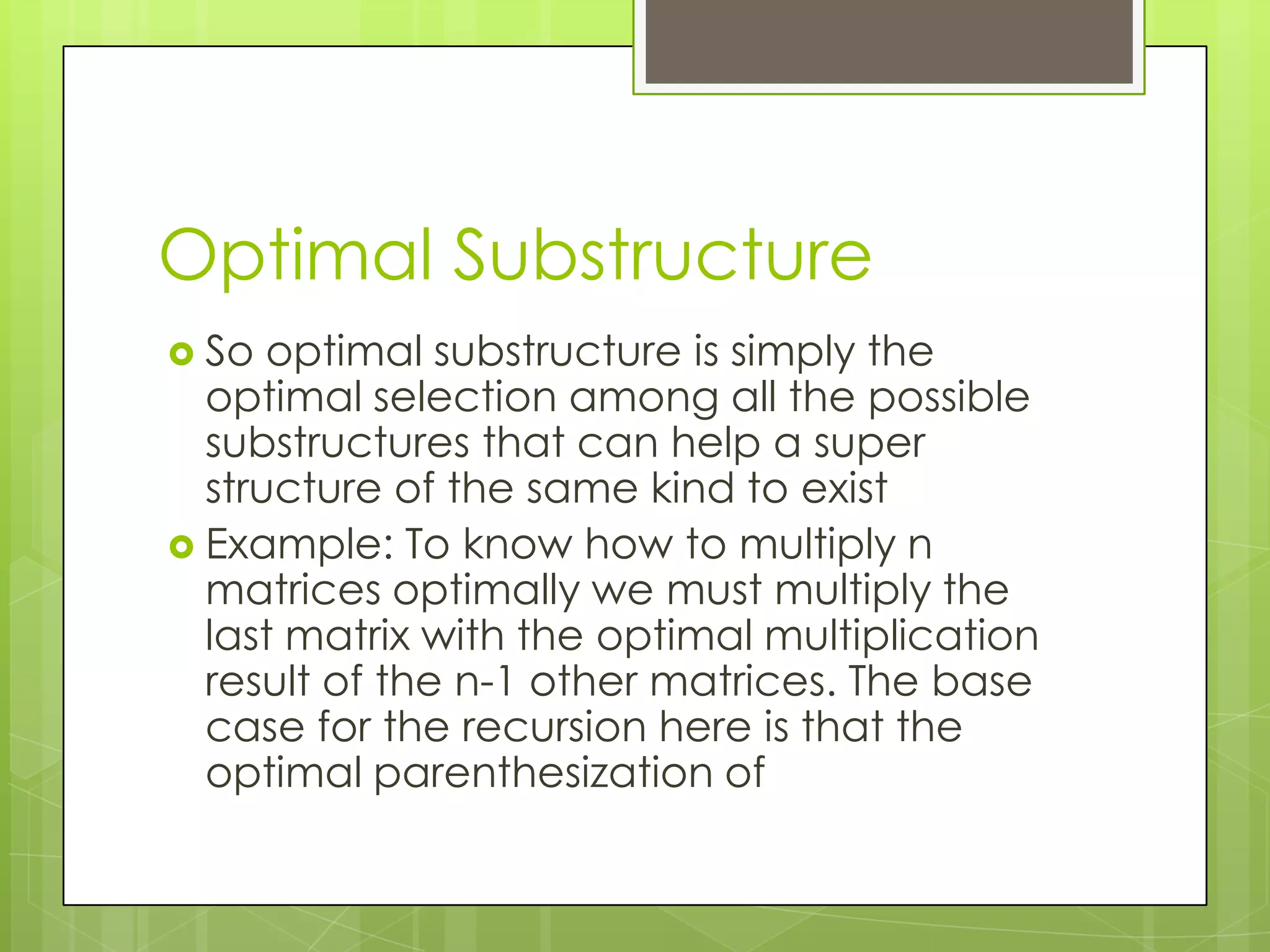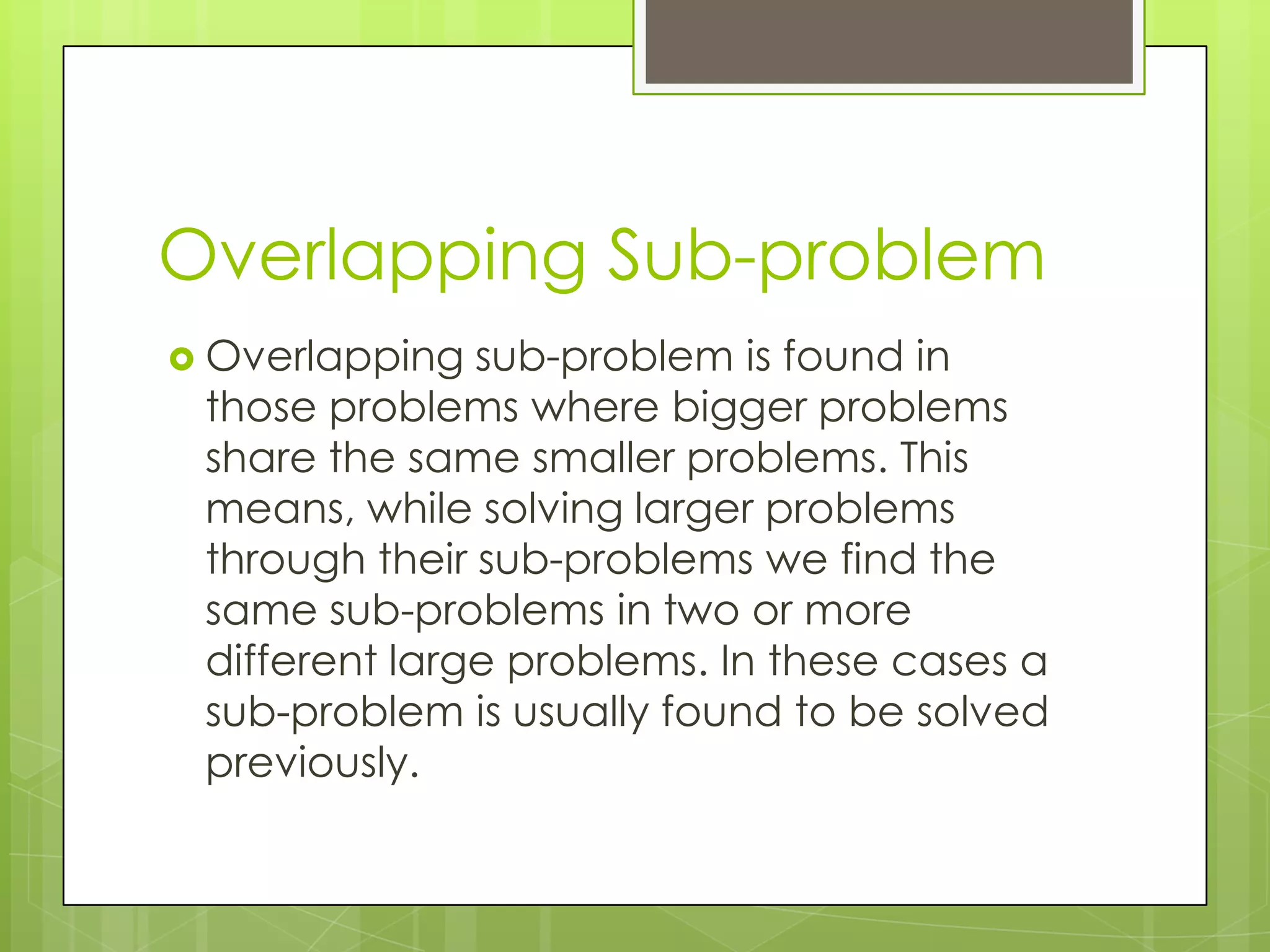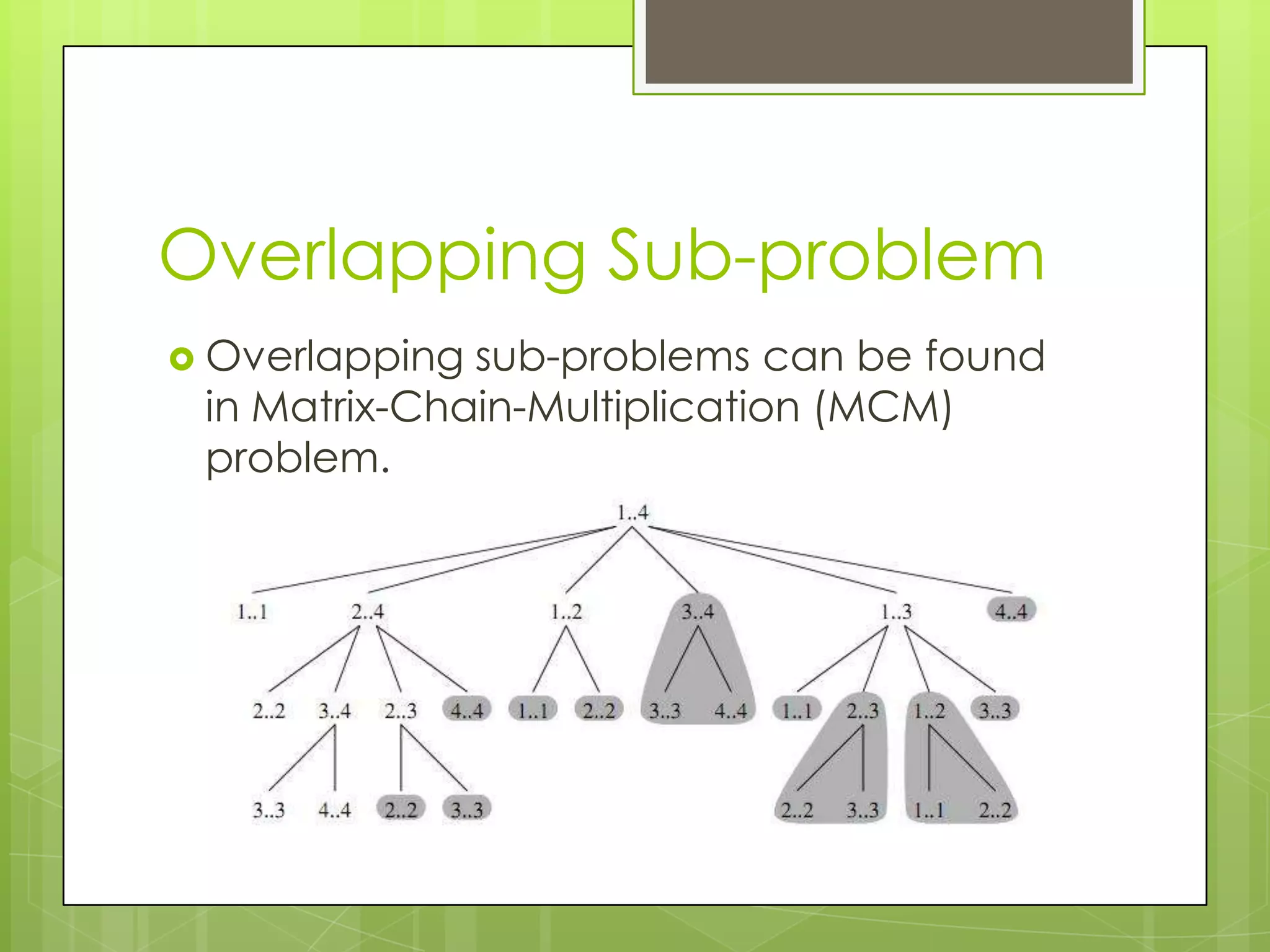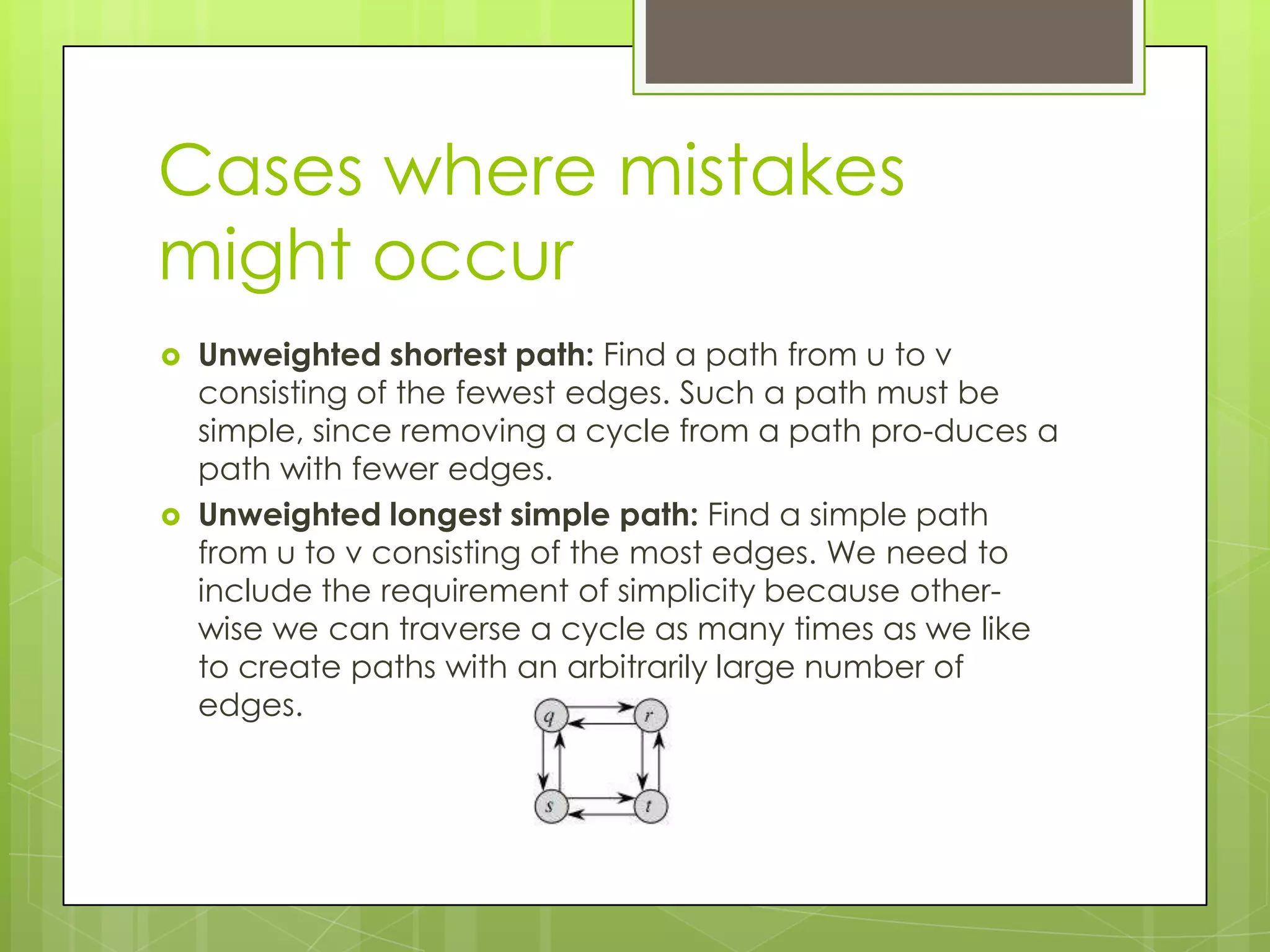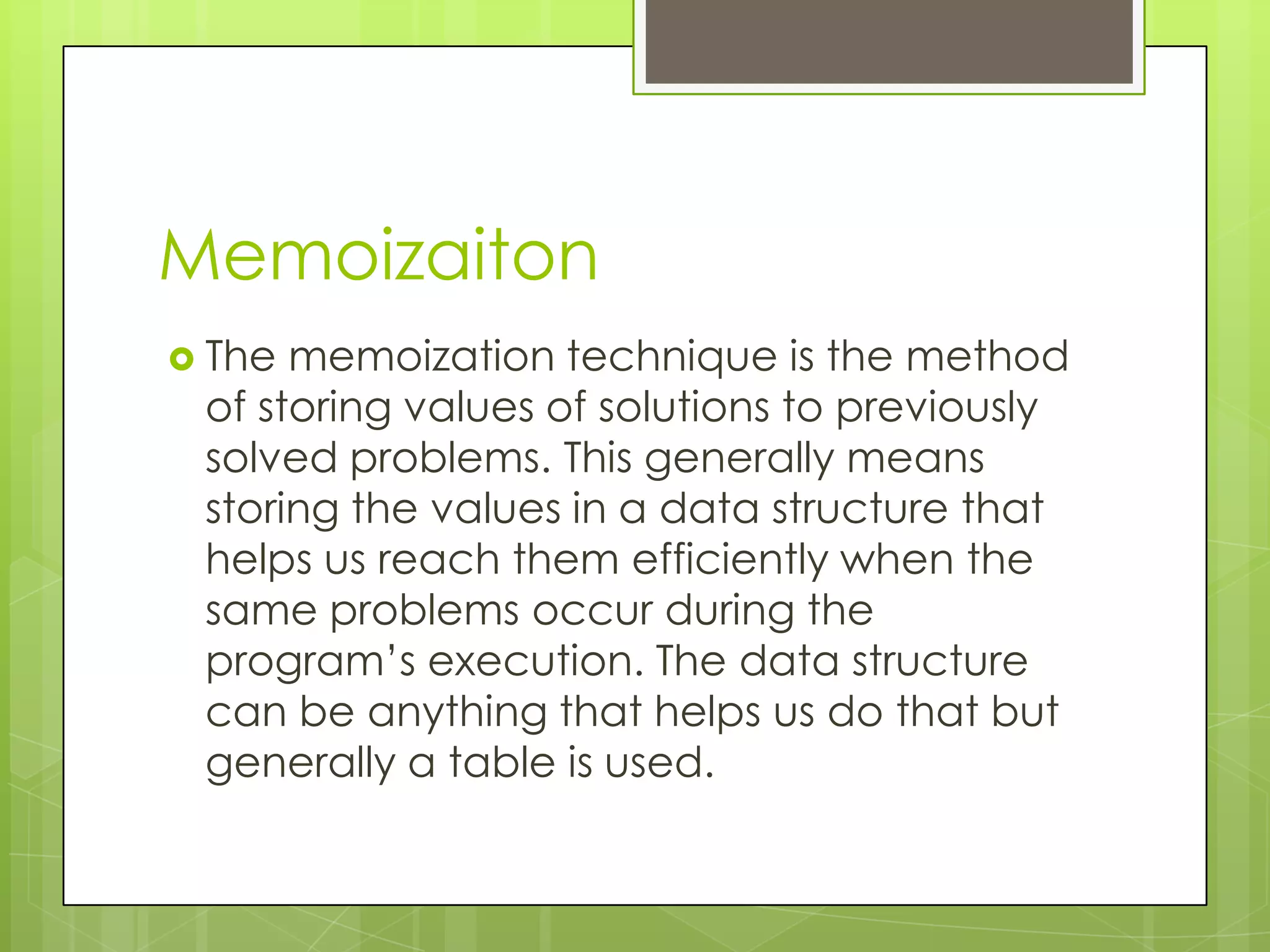Dynamic programming (DP) is a technique used to create efficient algorithms for specific problem classes, utilizing concepts such as optimal substructure and overlapping sub-problems. Optimal substructure involves choosing the best option from sub-components to solve larger problems, while overlapping sub-problems occur when the same smaller problems are resolved multiple times within different larger issues. Memoization is the technique of storing previously computed solutions to enhance efficiency in problem-solving.
